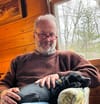Annual Meeting
There is an adage, you know, that the founding of this country was achieved by one-third of the population.

Annual town meeting season has come and gone, just as warming temperatures and bouts of rain have converted the snow into runoff along the roads and through the woods. Our property is surrounded on three sides by creek. By summer, one of them pretty much shuts down except for when there are thunderstorms and associated downpours. The others keep trickling enough to swamp your shoes if you miss trying to hop over them. Today, however, we could be using those running downhill to careen by kayak to the pond. When we crawl into bed tonight with the window open, we will be comforted by the babbling white noise of the water’s movement, letting us know nature is reopening for business. It is back to work time.
I expect this is why town meetings are in March, because of the likelihood that travel by horse was easier. With favorable temperatures and more daylight, it was time to assess the roads, the school, and meeting houses, getting it all done before planting season.
The timing of town meeting is not subject to the same worries today. It is mostly immune to the impact of nature, encumbered only by man made things such as gym class, yoga, ski weekends, basketball games, grocery shopping, maybe having to work on Saturday. Whatever those things, in our town, and towns around the region, turnout for annual meeting hovers around ten percent. And it is perplexing, always, that ten percent of the people have discretion to spend one hundred percent of the money.
By the time we left the western suburbs of Boston many years ago, the local town meeting was going on for four nights. An even smaller fraction of the community—albeit, several hundred people, requiring the high school gymnasium to accommodate them—made the decisions for the balance. I had joined others in believing town meeting had outlived its practical function in that part of the world and that it was time to switch to representative government, with a mayor and elected town council. It has not happened, of course. And there would be no facility for a legislative body of seventeen thousand if suddenly everyone in the old neighborhood decided to show-up and vote—which only means suburban Boston will never get closer to the democratic ideals of town meeting, only further from them.
In contrast, I delight in explaining to people from the old neighborhood that the nearest stoplight to our house is seven miles away . . . a flashing light. Maybe twice a year, I have to hit the brakes pulling out of our driveway because—what the?—another car is going by. People allow their dogs to walk off leash on our dirt roads. So, here, in towns throughout our region, the ideal of legislating as a community should be as easy as crossing the road.
No one expects one hundred percent voter participation. Things do come up. Thirty percent, roughly equal to the turnout earlier in the week to cast ballots on the ConVal issues and choose elected officials, including Select Board members, would be reasonably better than ten. There is an adage, you know, that the founding of this country was achieved by one-third of the population: one-third supported separating from Britain, one-third were opposed, and one-third could not bear to be in the room with either of them. Probably, the ratios are the same today: one-third to the right, one-third to the left, and one-third—the “exhausted middle,” as someone called them—stuck between. I favor more of the middle people showing up for the effect they have on the arc of every debate. They flatten it, removing some of the highs and lows. There are coffee and baked goods, they should know. In Hancock, there is a maple syrup report. But I will embrace more participation from any constituency if it shows that, as a team, we came to play.
For now, it is back to work.

